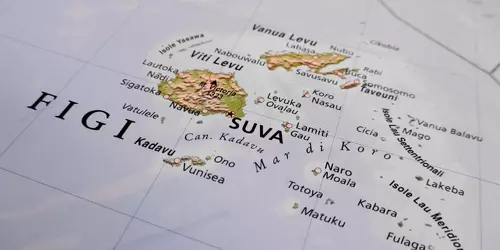Climate Table Fiji
Jan | Feb | Mar | Apr | May | Jun | Jul | Aug | Sep | Oct | Nov | Dec | |
|---|---|---|---|---|---|---|---|---|---|---|---|---|
| Max. Temperature | 31° | 31° | 31° | 30° | 28° | 28° | 27° | 27° | 27° | 28° | 29° | 30° |
| Min. Temperature | 24° | 24° | 24° | 23° | 22° | 21° | 20° | 21° | 21° | 22° | 23° | 23° |
| Sun Hours | 7 | 6 | 6 | 7 | 7 | 7 | 7 | 8 | 7 | 7 | 7 | 7 |
| Water Temperature | 28° | 28° | 27° | 27° | 27° | 27° | 27° | 26° | 25° | 26° | 27° | 27° |
| Rain Days | 18 | 18 | 21 | 18 | 16 | 13 | 14 | 14 | 16 | 15 | 15 | 18 |
The climate year of Fiji
332 islands on a total area of 18,333 square kilometers and with a coastline length of 1129 kilometers belong to the archipelago of Fiji. However, only 110 islands are inhabited, of which again most inhabitants live on the two main islands of Viti Levu and Vanua Levu. The Republic of Fiji is a geographically very isolated state - it is at least 2100 kilometers to the New Zealand coast. The capital is Suva, which is located on Viti Levu and has about 85,000 inhabitants. Due to its location near the equator and in the middle of the Pacific Ocean, Fiji has a tropical maritime climate, characterized by warm to hot temperatures and high rainfall throughout the year. Nevertheless, two different climatic regions as well as two seasons can be distinguished. The islands in the northwest are in the rain shadow, so that in the dry season almost no precipitation falls. In the rainy season, on the other hand, 1,700 mm of precipitation fall - still comparatively little for Fiji. In the southeast it is again very humid with an annual rainfall between 3000 and 6000 mm. Here it rains not only in the rainy season, but also in the dry season.
General information about Fiji
The Fiji Islands are the epitome of the paradisiacal South Seas feeling: endless white sandy beaches, surrounded by lush green vegetation and in front of it the azure Pacific Ocean surges. The coastal regions are characterized by impressive mangrove forests, while the interior of the individual islands is dominated by evergreen rainforests, but in some places also savannahs. Due to the isolated location, unique animals and plants could develop, which only exist on the Fiji Islands. One of the most beautiful beaches is located on Viti Levus, at Natadola you can surf excellently. Divers will find a very interesting spot at the Great Astrolabe Reef off Ono Island and the South Island. Also worth seeing are the sacred caves of Naihehe and the largest Hindu temple in the southern hemisphere, the Sri Siva Subramaniya Temple.
Tourism Fiji
The austral summer in Fiji lasts from November to April and is very warm, with average temperatures between 26 and 34 °C. Due to the consistent southeast winds, a lot of rain clouds are driven to Fiji during this time, so the rainy season also falls in these months. The showers are very heavy, but also very short. However, cyclones called tropical cyclones often rage in Fiji, so a trip should be planned for the southern winter if possible. The southern winter lasts from May to October and is characterized by cooler temperatures, almost considered moderate, between 20 and 26 ° C. The air is, however, very humid. However, the humidity is very high, even if it rains little - depending on the climate region.


